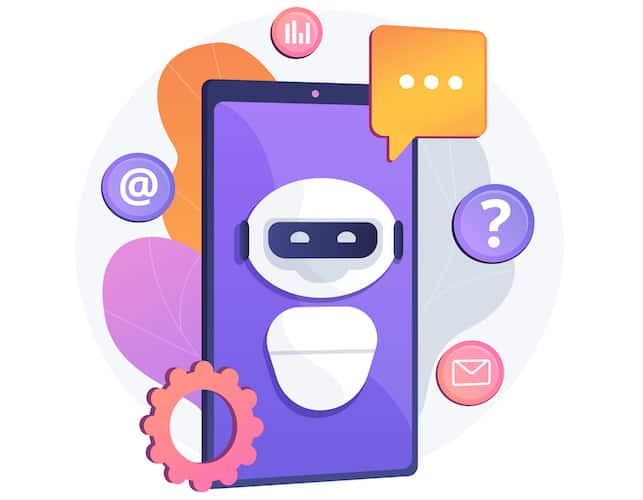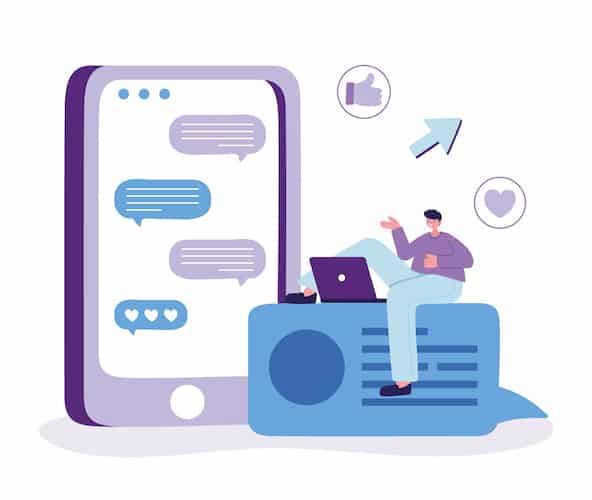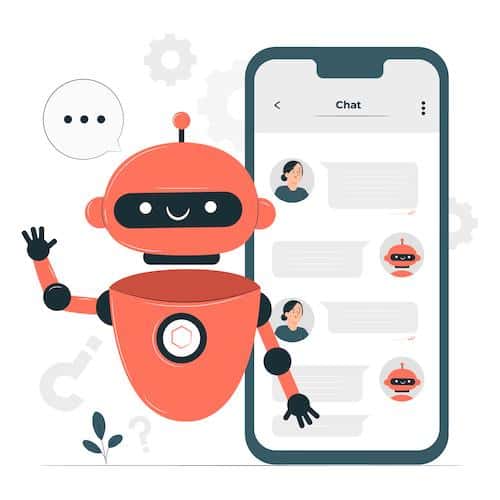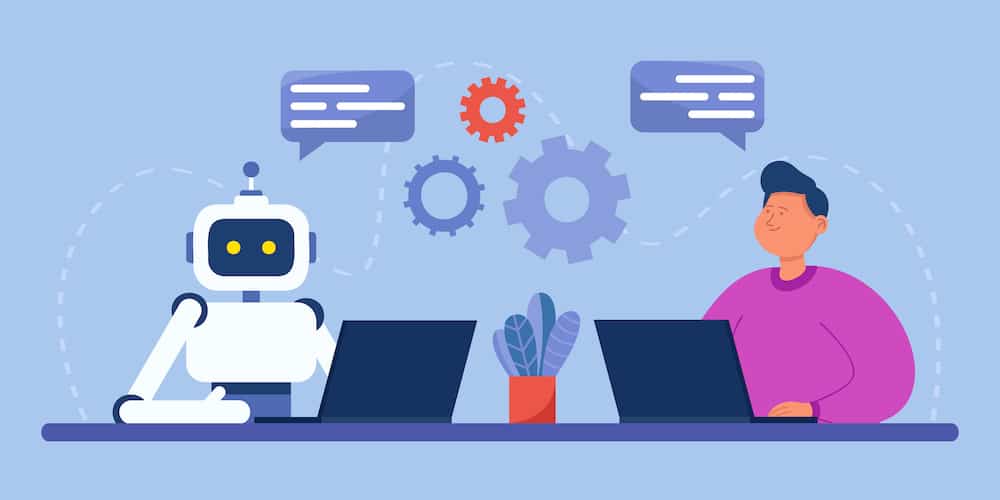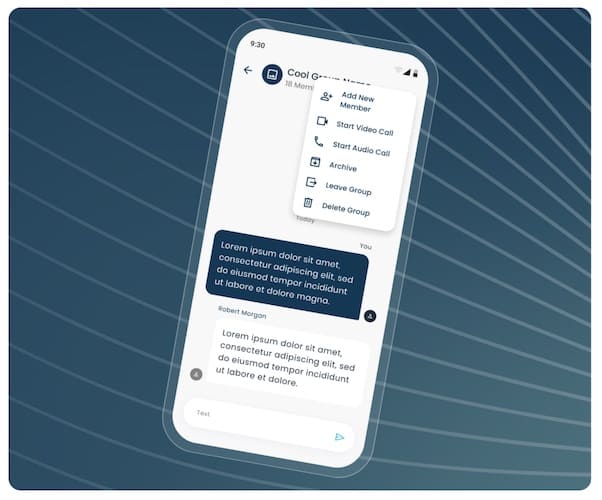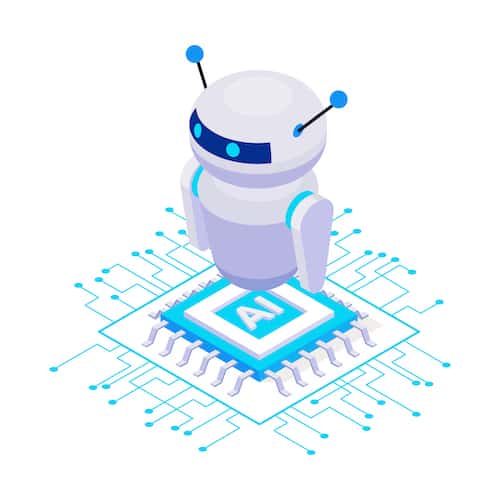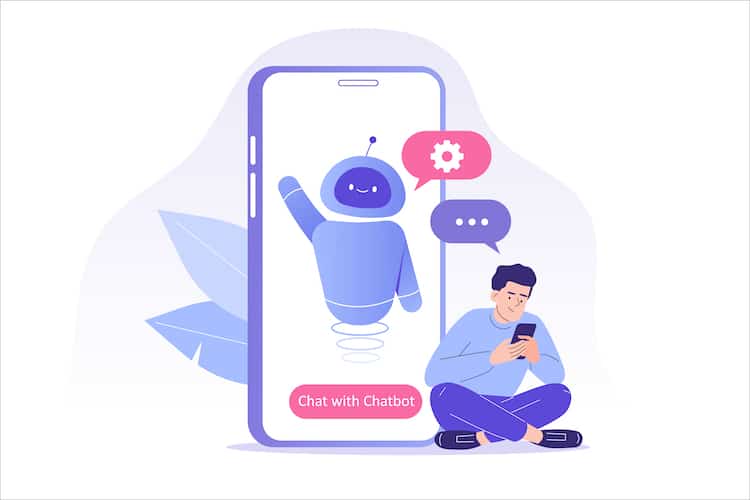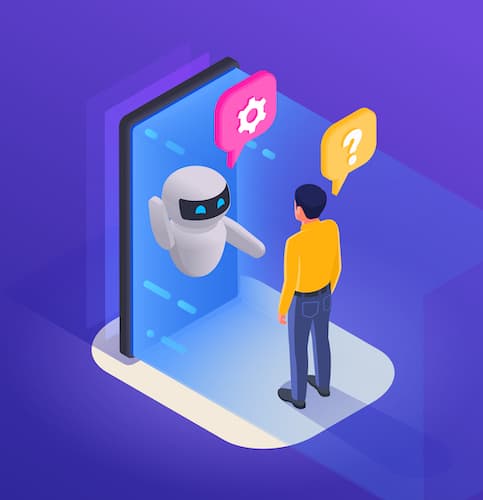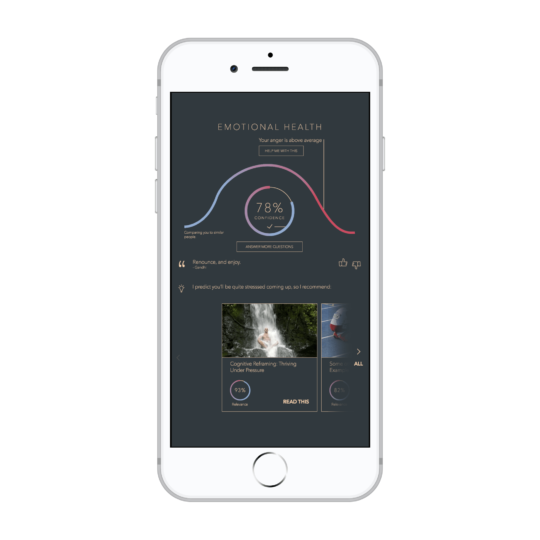I bet many entrepreneurs and business owners are already thinking about making a ChatGPT-like bot for their businesses. Customer support is a no-brainer, but what about more advanced uses of this thriving technology?
What if a human-like medical assistant monitored patients’ well-being and checked on their symptoms by talking to them? What about a financial guru educating newcomers on investing in crypto and stocks?
If you’re wondering how to build your own chatGPT and make the best use of this technology, here’s a good place to start your research. We’ll cover all steps and nuances, so you come well prepared.
Top Takeaways:
- An ideal scenario to build your own ChatGPT is through OpenAI’s API for ChatGPT and Whisper (their speech-to-text model). APIs will automatically update as the company keeps improving the solution, and we get access to the latest language model.
- An alternative take on how to build a ChatGPT-like bot is working with one of GPT-3 models, training it on our own datasets.
Table of Contents:
1. What Is ChatGPT and How Is It Used?
2. The Best Alternatives to ChatGPT
3. Is it Profitable to Make Your Own ChatGPT
4. Steps to Build a ChatGPT-like Bot
- Step 1: Discovery
- Step 2: Prototyping
- Step 3: Proof of Concept
- Step 4: Design
- Step 5: Coding
- Step 6: Testing
- Step 7: Release and Maintenance
5. How Topflight Can Help if You Decide to Develop Your Own ChatGPT
What Is ChatGPT and How Is It Used?
ChatGPT is the latest incarnation of an AI-driven chatbot by OpenAI. The GPT suffix stands for Generative Pre-trained Transformer or, in simple words, an AI engine capable of generating new content based on what it learned during training.
Chatting with a bot can quickly get emotional
The What of ChatGPT
At this point, ChatGPT exists solely as a web application accessible via web browsers where users can type requests and get the bot’s feedback. Despite not being available on mobile and having no speech recognition (it takes in only written commands via the website), the bot has already generated a lot of hype and is continuing to do so:
- got featured on TIME Magazine’s cover
- got a $10B partnership investment from Microsoft
- got banned by the New York City Department of Education and a few schools and universities (so far)
- trumped the NFT, metaverse, and other recent hype topics
- gained more than 100 million users within two months after the launch
And yet, ChatGPT, in its current incarnation, is still just another testing step for OpenAI and Microsoft. The companies behind ChatGPT have already made the API waitlist available for developers. Meanwhile, they are working out the quirks while getting feedback from more than 100M testers. Because every interaction with the AI engine behind the bot makes it a little brighter.
Update: OpenAI has just published these (March 2, 2023) APIs, so there’s no need for a workaround that I was planning for this blog. But we’ll cover that later.
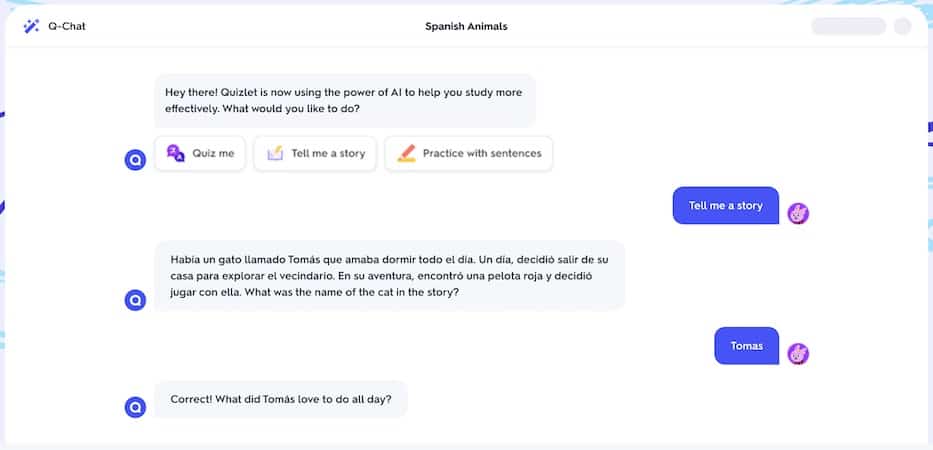
The How of ChatGPT
The fundamental concept of the bot hides behind the G — generative. This chatbot can create novel human-like text based on the information it has learned (and keeps learning during a conversation). And founders can get really creative with how to ride this AO power.
AI vs. Search
Don’t get me wrong, Google and other search engines definitely have ML (machine learning) and AI capabilities under the hood. But they still function off keywords tied to customer requests.
Also Read: AI App Development Guide: Everything You Need to Know
Siri, Alexa, and other voice personal assistants have made many people comfortable asking for things naturally. Now, how long do you think it takes before we switch to searching by naturally asking questions rather than trying several search queries and going through the top 10 search results on Google?
Image from the new Bing.
Conversation-based assistance
Think about how you usually research a service or product. You spend 5-10 minutes skimming through a few web pages on each site, right? Well, a ChatGPT-like solution can replace web navigation altogether. Instead of picking different details on separate pages, the customer can ask a bot all questions and even buy a product right inside a chat.
To name a few cases specific to healthcare chatbots besides ubiquitous customer support, we can find a chatbot useful for the following:
- appointment scheduling
- preliminary diagnosis
- medication reminders
- general health advice
Related Article: How is ChatGPT Used in Healthcare and Medical Chatbot Development.
Other use cases relevant to businesses include summarization, translation, and many others. And customers simply need to enter a prompt to get a bot to do all these things.
The Best Alternatives to ChatGPT
BERT by Google: APIs should be available for select developers in March 2023. The direct competitor to ChatGPT.
Meena by Google: no APIs, an intelligent chatbot like ChatGPT, built on the BERT tech.
RoBERTa by Facebook: open-source deep-learning natural-language processing (NLP) model; Facebook’s take on improving what Google had with BERT a couple of years ago. No APIs, but the model is available.
Jasper: a smart chatbot built on GPT3 models, optimized for various business needs; no APIs.
ChatSonic by WriteSonic: a chatbot for writing all sorts of content; offers comprehensive APIs.
Is it Profitable to Make Your Own ChatGPT
Depending on your business goals, a chatbot like ChatGPT can considerably save operating costs or make money on subscribers. The cost benefits are pretty obvious:
- 24/7 Availability: Chatbots can be programmed to be available round the clock, providing customers with support whenever needed.
- Instant scalability: Chatbots can handle a large volume of customer queries simultaneously, leading to cost savings for businesses.
- Increased Efficiency: Chatbots can quickly and accurately respond to customer queries, freeing up human agents to focus on more complex tasks.
In addition, we get:
- Improved Customer Engagement: With the ability to generate human-like text and understand user requests, ChatGPT chatbots can provide customers a personalized and engaging experience, leading to improved customer satisfaction.
- Data Collection: Chatbots can collect valuable data about customer preferences, feedback, and behavior, which can be used to improve the business’s products and services.
Read more on chatbot development cost
Examples of companies that got access to ChatGPT early on include SnapChat, Shopify, Instacart, and others. They all see a super-smart chatbot as an engaging solution helping customers spend more time, and nolens volens participate in its monetization.
Also Read: Monetization Strategies for your Application
Steps to Build a ChatGPT-like Bot
To make your own ChatGPT, we must follow a series of steps. Let’s quickly review the most critical ones and discuss what you need to keep in mind when working on them.
| Step | Description |
|---|---|
| 1. Discovery | Identify your target audience, define key features, and gather specific data to train the AI engine for niche use cases. |
| 2. Prototype (Optional) | Consider prototyping if your bot requires novel functionality or unique interface elements. |
| 3. Proof of Concept | Develop a simple version of the bot to validate its ability to respond intelligently and maintain conversation context. |
| 4. Design | Design the chatbot’s UI, ensuring it’s user-friendly, or skip this step if a standard chat UI suffices. |
| 5. Coding | Use ChatGPT APIs or train a GPT-3 model, set up data pipelines, and follow agile development practices to build the bot. |
| 6. Testing | Thoroughly test edge cases and ensure proper moderation to avoid unintended or harmful responses. |
| 7. Release and Maintenance | Launch the bot, monitor performance, address UX/UI updates, and rely on API improvements for AI enhancements. |
Step #1: Discovery
If you recall from our previous blogs, we run discovery to identify our target audience and decide on key features that will translate into quicker adoption and attainable ROI goals.
And even though creating a ChatGPT-like bot may sound self-explanatory, like “What’s there to discover?”, we still need to carefully research our customers’ needs. The chatbot will keep engaging, human-like conversations only if we have enough data to train its AI engine.
I mean, of course, since we’re building on top of ChatGPT API, the bot can already reply pretty intelligently. However, if we want to apply that for specific settings, e.g., healthcare or fintech, we must train it on niche-specific datasets.
Step #2: To prototype or not to prototype?
Rapid prototyping, so common on other projects, suddenly seems less lucrative when we develop a ChatGPT-like chatbot. Here’s why.
As you remember, a prototype is an interactive graphical shell of an application that users can click through to experience the UX firsthand. And we do this because creating a prototype out of 10 or key screens is much cheaper than coding the same functionality.
Users click through the screens, we analyze their feedback, and make UX improvements without spending a dime on coding.
Also Read: UI/UX Tips to Design a Winning App
However, it’s worth noting that prototypes carry just dummy data, meaning our users won’t be able to engage in a custom conversation. And getting intelligent, on-point answers from the bot is why we’re building it in the first place.
Besides, chat UIs have been so commoditized that there’s little to invent from the design perspective. We even have a Telehealth Chat Component that works as a perfect ready-made solution (with further customization if necessary).
I’m trying to say that rapid prototyping will only be necessary if we envision some novel functionality in our chatbot. For example, if we want to open up some clickable items from the dialog into mini widgets like a map view tracking our delivery.
So how do we test our chatbot’s engagement potential without coding the whole thing when rapid prototyping is useless? Let’s see the next step.
Step #3: Proof of concept
That’s right, we build a proof of concept. You’ve probably already heard about MVP, right? The minimum viable product is what you bring to the market with hopes of getting real traction — your product, with a minimal set of features, enough to delight users and turn them into paying customers.
And proof of concept is the app’s core feature, sometimes with minimal design, that you use to validate your business idea. In that sense, a PoC is even more minimal than an MVP.
Also Read: MVP App Development Guide
Let’s say your end goal is to create your own ChatGPT for your clinic so your site visitors can find out everything about your services and schedule a consultation without hopping around the site.
So a proof of concept can be a chatbot that knows all answers from the site’s FAQs, the clinic’s address, and phone number. Depending on whether we want to use ChatGPT API or fine-tune an earlier GTP 3 model, we will either:
- put together a minimal interface for chatting (and fetch all data via API)
- or prepare and train a model on our dataset, again, accompanied by a simple UI
We test that with users and see if answers hit the mark. The chatbot will have to supply intelligent answers and follow the context of conversations.
Step #4: Design
This step should be straightforward unless we look for other functionality besides chatting. All chatbots look pretty much the same: a background, messages, and a text entry field. If your chat needs more, do not skip the prototyping step. In that case, prototyping is important.
Step #5: Coding
Since OpenAI provides access to ChatGPT and Wisper APIs, developing your own chat GPT solution becomes much easier.
It’s best to opt for a cross-platform framework like React Native or Flutter. You’ll probably want to make the chatbot available on as many platforms as possible, and cross-platform dev tools are perfect for that.
An alternative to using ChatGPT APIs would be to pick a GTP 3 model, e.g., davinci, and train it ourselves. However, that would require additional effort. To develop a GPT-3 like chatbot, we must set up data pipelines for continuous data consumption and training.
Again, as with any software development, ensure to follow these best practices while building a chatbot like chat GPT:
- agile development with 2-week sprints
- transparent task management with systems like ClickUp
- constant communication with the team
- DevOps environment setup from the get-go
You can also read up on that step in our earlier blog on how to create a chatbot.
Step #6: Testing
Testing is part of the development step, as it happens intermittently before each new build. I’m making it a separate step to draw your attention to the necessity to thoroughly test edge cases.
When people interact with a human-like AI, someone will always try to “break” it in a way. And given the breadth of AI knowledge, they may get unexpected results, such as harmful answers. To avoid that, pay attention to the moderation capabilities of ChatGPT API.
Step #7: Release and maintenance
Launching the bot will be a breeze, accompanied by sporadic marketing campaigns unless you’ve been planning it since the very beginning. Fortunately, if you select the right partner, who doesn’t bombard you with questions but instead comes with suggestions, marketing will result in early traction.
And as for maintenance, I have some good news for you. If we rely on ChatGPT APIs, there’s not so much to do in terms of updates. Their APIs will automatically handle any improvements to the underlying language models, and we can focus on the UX/UI improvements.
Of course, software always has random bugs, but specialized systems monitoring the app’s performance, e.g., Sentry, will catch these.
Hopefully, this little tutorial gives you a better idea of how to create a ChatGPT-like bot.
How Topflight Can Help if You Decide to Develop Your Own ChatGPT
Our team counts a few talented ML/AI developers with intimate experience in solving natural language processing tasks. In fact, we had worked on AI chatting solutions even before ChatGPT, or its APIs became available.
Xzevn is an excellent example of how you can create a mental health chatbot. The Topflight team built a personalized content recommendation app that helps individuals maintain emotional health and improve their time management, decision-making, and goal-setting.
Users input their daily emotions (journaling) via chatbot conversations, respond to daily questions, and like or dislike recommended articles and famous quotes.
Related: Machine Learning App Development Guide
And in terms of creating an engaging chat app, we’re proud to fuel the growth of the SoberBuddy chatbot. Despite not relying on AI algos, this chatbot has been setting some user engagement records recently:
- raised: $1 million since the partnership
- ⬆️ retention by 300%, increased average engagement time by 40%
- ⬆️ App Store rating from 3 to 4.5
- ⬆️ user count to 30,000
- ⬇️ cost of acquisition by 50%
If you plan to make a ChatGPT-like chatbot, get in touch, and let’s talk.
[This blog was originally published on 3/12/2023 and has been updated for more recent content]
Frequently Asked Questions
How much does it cost to build a custom chatbot like chatGPT?
We do not provide fixed estimates out of the blue, although we often provide carefully weighted estimates after the discovery stage. However, those calculations work primarily as min and max reference points, as we remain flexible during the entire development process. This agile approach allows us to bend functionality and designs according to early feedback and achieve greater traction. To get an idea of the costs associated with partnering with us, look at our Vision to Traction System.
When will chatGPT like chatbot start making money?
As soon as you launch it, given you have worked really hard during the discovery phase and carefully thought through your monetization strategy.
How long does it take to create your own chatGPT?
Expect at least 6 to 12 months working on something usable and delightful.

